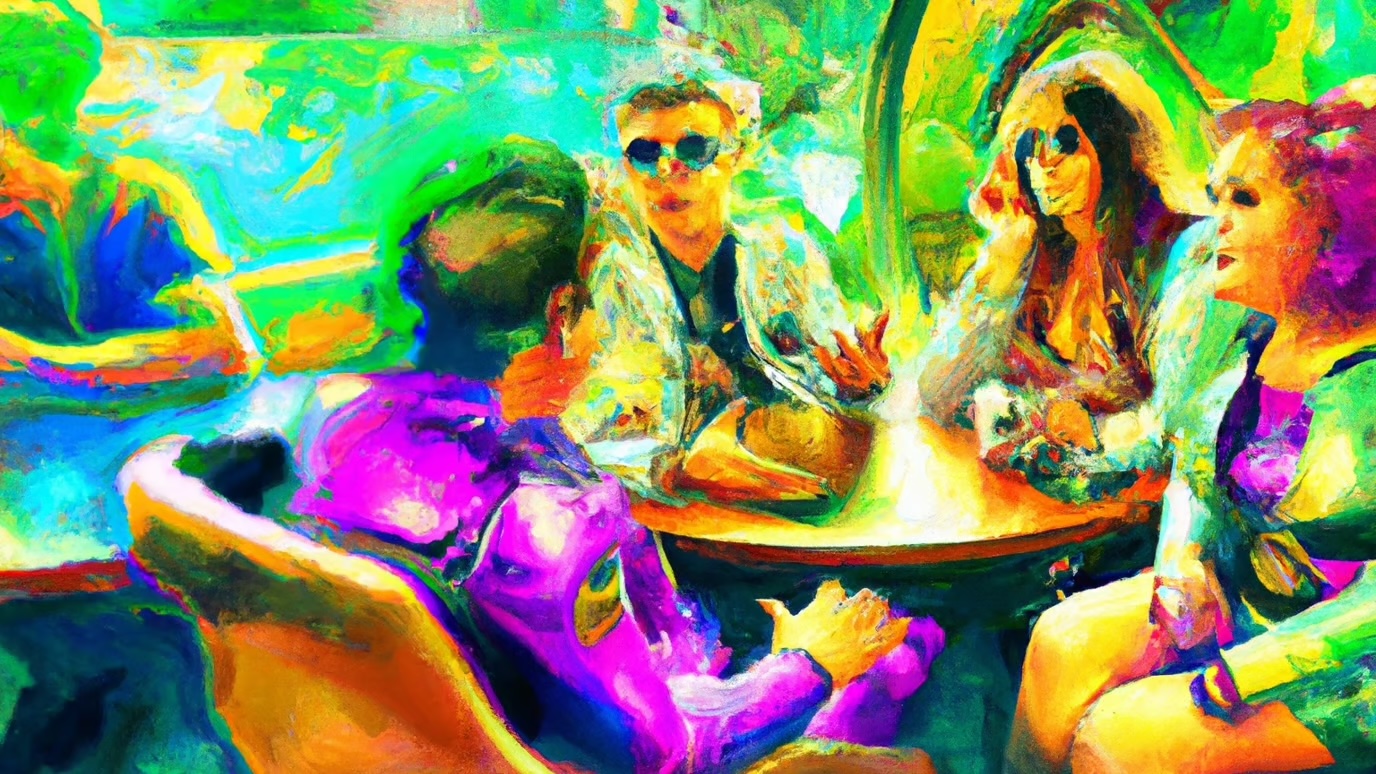🔥 Join our campaign to train 350 million activists!
How to organize a protest
Step-by-step guide for activists
In this guide, you will learn how to organise a protest or demonstration. This article for activists explains step by step how to organise an action to draw attention to your cause.
This guide provides the basics of organizing your first protest and other useful tips. Following are ten suggested steps to organizing an effective protest and some suggestions for taking it to the next level. There are plenty of opinions about how to host a successful and inclusive protest so feel free to read critically and adapt these ideas freely to suit your goals.
Get 450+ free guides for activists
On Activist Handbook, you can find over 450 free guides for change-makers. Sign up to get a selection of our best articles in your inbox:
In short
A successful demonstration — one that accomplishes its goals either immediately or over the long term, and that runs the way organizers envisioned — depends upon clarity of purpose, getting people there, getting the message to those who need to hear it, and leaving a sense of success and support for the issue with your target audience, your constituents, the public, and the media.
If you consider beforehand whether a demonstration is the right vehicle for you to get your point across, plan it carefully, carry it out well, and follow up diligently, then you should be able to stage a successful public demonstration.
If your demonstration is to go smoothly and to accomplish its purpose, you’ll need to organize it carefully. There are really four major bases to cover in putting together a public demonstration:
- Planning, planning, planning
- Lead time
- Communication
- Follow-up
The Basics
If you are new to protesting, we recommend you to read the following articles first:

Prepare your protest
If there is a single most important piece to organizing a demonstration, it’s planning it completely beforehand. The demonstration must have a coordinator and a group of organizers who work together before, during, and after the event to plan and carry it out. They need to decide what the demonstration will be like, and to anticipate potential problems and plan for them as well.
1. Build a Team of Organizers
As you begin to organize your protest, the more like-minded friends and community members you have at your side, the better! Reach out and ask if they want to help you organize. If your protest issue does not directly impact you, be sure that you are intentionally building relationships with those in your community who are, centring their voices and experiences, and listening to their guidance. It is best if you can co-create your team and action together. Lastly, seek out local or regional organizations that work on your issue and invite them to organize with you. (You may also learn a thing or two from them!)

2. Define your strategy
In this section, we briefly discuss how to define your strategy. But we also have a full chapter about how to define your strategy.
Answer these questions:
- Goals: What do you want to achieve?
- Target: Who has the power to make that happen?
- Action: What kind of action would make them listen to you (tactic)? When and where should you organise this action to make the most impact?
What is (are) the exact goal(s) of the demonstration? It’s important to decide whether you’re advocating for or supporting a position, protesting something, or planning a specific action. Your purpose will help to determine the tone and shape of the demonstration. If advocacy is your goal, the demonstration might be upbeat, singing the praises of whatever you’re advocating for. If your purpose is protest, or righting a wrong, then its tone will be different. Tone is important, because what you accomplish might depend on how the demonstration is viewed. If your demonstration leans too much toward entertainment and feel-good sentiment, it may not be taken seriously. If it’s frightening, people may not listen to its message.
Ask yourselves what you are trying to achieve through this advocacy lane. Are you trying to build awareness? Do you aim to build a larger coalition to continue work on your issue? Are you trying to be seen and heard by an elected official or influential figure? Be clear with yourself and others about the objectives behind your actions. This will help you develop the best strategy, and later reflect on elements that can be improved.
With your goals in mind, try to imagine the most effective protest to achieve those goals and focus on making that protest happen. Ask yourselves: when and where will you hold the protest and why? What type of protest is required to achieve your goal? The most common modes of protest are marches and rallies. But protests can take many forms: sit-ins, walk-outs, vigils, and more sophisticated efforts like encampments and choreographed or theatrical expressions.
Demonstrations may be meant to serve one or more different goals, depending upon the timing of the demonstration, the issues involved, who’s doing the organizing, and what else has gone before. Setting out your goal clearly is important, because it will often dictate what form the demonstration should take, at whom it should be directed, and other crucial elements. Common goals for demonstrations include…
- Advocacy: To urge legislators or the public to look favorably on a bill, adopt a particular idea or policy or service, or pay attention to the needs of a particular group of people (welfare recipients or people with disabilities, for instance).
- Support: To express agreement or solidarity with a person or group, with an idea or policy, or with a particular issue. For example, a group of organizations offering different services might hold a community demonstration to support the proposed establishment of more and better services for the homeless in the community.
- Protest: To speak against some injustice, event, public figure, potential occurrence, etc. A group might demonstrate against the possible establishment of a hazardous waste treatment plant in their community, or to protest the treatment of community residents by police.
- Counter-demonstration: To respond to a demonstration or other public event already scheduled by another, antagonistic organization. A civil rights group might organize a demonstration to balance one by the Ku Klux Klan, for instance; or a group of demonstrators might organize to counter a rally for a politician whose views they disagree with.
- Public Relations: To advertise or put in a good light an event, issue, organization, segment of the population, etc.
- Action: To actually accomplish a specific substantive purpose, prevent or change a particular event, or to influence the course of events. Such actions might include workers on a picket line blocking replacement workers’ access to a factory, or peace activists chaining themselves to the gates of a military base; it can also include demonstration participants breaking up into constituent groups to visit their legislators.
- A combination of any or all of the above.
In reality, most demonstrations serve more than one purpose. Regardless of their other goals, most organizers seek media coverage for the demonstration, for instance, in order to draw attention to their cause. Most demonstrations either advocate for and support, or protest against, something. The difference is in the emphasis, which may have a great effect on the form and timing of the demonstration.
People on podium speaking to fellow protestors – Generated using OpenAI
Decide who you’re trying to reach with the demonstration’s message, and who you want to attend. Contact other organizations, coalitions, etc. long before and get them to endorse (and attend) the demonstration. The time, place, and program should be geared to the desired audience.
- Legislators or other elected officials: The demonstration should be where they are — City Hall, the State House–on a day when they’re in session. Elected officials pay attention to voters. This is a great situation for members of the target population, especially those from key legislators’ districts, to tell their stories, and for advocates to use their knowledge of statistics to underline the magnitude of the issue and the size of the constituency affected by it.
- General public: If you’re aiming your message at the general public, then you might want a very large demonstration, or one that’s particularly unusual or interesting, staged in a public place at a busy time, so that it will attract both onlookers and media attention. It’s even better if there’s a draw, in the form of entertainment and/or celebrities. And the demonstration should be advertised publicly, through flyers and posters in neighborhoods, public service announcements on radio and TV, clubs and churches, etc.
- Target population: If you’re trying to publicize an initiative with those you hope will take advantage of it, it should be in their neighborhood, and in their language as well. It might help if children and families are encouraged to come, and if familiar figures from the target group itself are part of the program. Presentations should be aimed at providing practical information and helping people understand the issue and how it relates to them.
Decide where the demonstration will be. Your decision will depend on timing, on how large a space you need (How many people do you expect or hope for?), on whether your demonstration is a reaction to something specific in a specific place, and on who you want to reach with your message. However, there are some important general questions you need to answer in choosing a place. Is it available for the time you need it? Do you need, and can you get, a permit to use it? Will it cost you anything, and can you afford it? Is it accessible to those with disabilities? The answers to these questions will help you determine where to hold the demonstration.
Decide on a specific day, date and time. Sometimes, the day, date, and time are determined for you: a counter-demonstration, for example, will happen at the same time as the demonstration it is meant to counter; a particular vote in the legislature will take place on a particular day. But in general, these elements are determined by three things:
- The availability of the people you want to reach (A rally at the State House on Saturday won’t attract many legislators, nor will the ‘solidarity with Working Mothers’ demonstration attract many working mothers if it’s on Tuesday at 2:00 PM… when most of them are working.)
- The weather (You might not want to hold an outdoor demonstration in Minnesota in January… or in Florida in July). Do you need a rain or snow date?
- Conflicts with other events (You don’t want to compete with the free Rolling Stones concert in Central Park).
Learn more about this in our strategies chapter.
Urgent request: Please don't scroll away
We ask you, humbly, to help. We depend on donations to stay free and independent. But very few people decide to donate.
Activist Handbook trains 6000 new activists every month. We are a nonprofit and we have published over 450+ guides for change-makers.
We appreciate any donation, no matter how small. Give whatever you can afford this month:
3. Choose an action tactic
In this section, we briefly discuss different tactics you can use. Make sure to also read our chapter with a list of tactics for protests.
Plan your program. What you’re actually going to do at the demonstration also depends upon what you want to accomplish and who your audience is. There needs to be a clear structure for what will happen, and everything in the program should be geared directly to the desired results of the demonstration. Block out the schedule to the minute, and let participants know well beforehand how long they have in the program**.**
Some possibilities for programs or program elements:
- Speeches may convince some people and bore others, although some speakers and speeches (Martin Luther King’s “I Have a Dream” comes immediately to mind) are so powerful that they electrify anyone hearing them. Celebrity speakers may draw people and attention to the demonstration and to your issue. Speeches may be meant to convey information, convert the unconvinced, or simply fire up the crowd and supporters. Members of a target population (people who’ve learned to read as adults, AIDS sufferers, etc.) may be the most eloquent spokespersons for their issue.
- Marches or other movement of demonstrators can serve to show the extent of support for your issue, and can dramatize–by the route chosen–where a problem is located, and who should be involved in a solution. They can also help to build group spirit, to expose large numbers of people to the existence of the issue, and to attract media attention.
- Entertainment. Music may energize people, address their emotions, and help to develop group spirit. It’s usually geared to the subject of the rally, with songs written for the occasion, for instance. Theater can be used to ridicule ideas being protested, as was done very effectively for years by such groups as the San Francisco Mime Troupe. If the entertainment is particularly good or includes celebrity performers, it’s almost sure to attract media and bystanders.
- A symbolic activity, such as each person lighting a candle, group song or chanting of slogans, the display of a picture or document, prayer, etc. can be a powerful way to communicate a message, solidify a group, and gain public attention. It can also be seen as nothing more than an attention-grabbing device. This kind of activity has to make sense for your particular issue and demonstration.
- Picketing may be used simply to make a point, or to discourage people from entering or patronizing a particular building or space because of their sympathy with the picketers’ issue. In either case, it requires a high degree of organization, but it creates a vivid picture in people’s minds, and makes a strong point. It can also make your organization seem more militant than it is, or than you want it to be perceived.
- Civil actions or civil disobedience can range from legal actions designed to accomplish a specific purpose (large numbers of people witnessing an event that the perpetrators would have preferred to keep quiet, such as the destruction of a neighborhood landmark) to a few people engaging in a symbolic action designed to get them arrested or otherwise challenged (chaining themselves to the gate of a government building, refusing publicly to pay taxes, etc.) to mass actions like civil rights marches or the blocking of troop movements in Tien An Men Square. Demonstrators taking part in civil disobedience must be willing to be arrested and face punishment, and organizers must train them beforehand to respond appropriately to the police and to the whole arrest procedure. Organizers must also be aware of the impact of these actions on how their issue is perceived by the public.
Read more in our tactics chapter.


